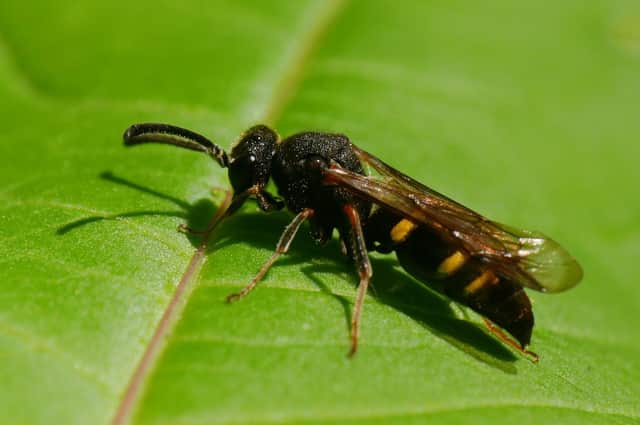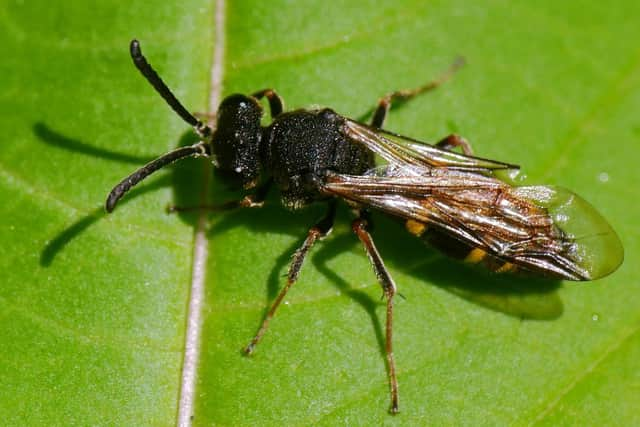Parasitic wasp discovered in Greater Manchester for the first time


The large-spurred digger wasp, Nysson spinosus, is a parasite of other digger wasp species and has a fascinating lifecycle. This is a hugely exciting discovery as this elusive species has not previously been seen in Greater Manchester, despite the potential for wider distribution in the area.
The wasp was spotted by Lancashire Wildlife Trust volunteer, Joe Holt, during a guided wildlife walk through Philips Park, Bury during the summer. The species identification was later confirmed by experts Karen McCartney, a member of the Bees, Wasps and Ants Recording Society (BWARS) and Ben Hargreaves, LWTrust Plan Bee Project Officer.
Advertisement
Hide AdAdvertisement
Hide Ad

Karen, said: “This species isn’t regarded as scarce or threatened but is still a fantastic record for Greater Manchester and can be seen from May to July, particularly in deciduous woodland.”
The large-spurred digger wasp belongs to the Crabronidae family within the Hymenoptera group, which includes ants, bees, wasps and sawflies. This parasitic species seeks out the burrows of other digger wasps by scent, enters the burrow and lays her own egg on the food stored by the host wasp. The larva then hatches, destroys the host wasp’s egg and feeds on the food store originally intended for the larva of the host wasp. This clever tactic saves the large-spurred digger wasp a lot of time and energy as the host wasp digs the burrow and collects all the food needed to sustain the growing wasp.
Despite the slightly sinister way in which this wasp species reproduces, they occupy a valuable place in the ecosystem and are important pollinators. Large-spurred digger wasps are frequently seen on umbellifers like cow parsley, common bird’s foot trefoil and wood spurge. Digger wasps also play a key role in controlling numbers of other invertebrates, their sting is not a defence mechanism, it is used to paralyse their prey.
The UK is lucky enough to be home to several thousand different species of wasp. Some species are solitary, like the large-spurred digger wasp found at Philips Park, while some are social wasps, like the well-known common wasp.
Advertisement
Hide AdAdvertisement
Hide AdWasps get a lot of bad press, but they really don’t deserve the enmity directed at them. They provide valuable ecosystems services, such as pest control through predation of other invertebrates and the pollination of flowers and crops.
Insect numbers have plummeted in the last 50 years, and 41 per cent of insects worldwide are thought to face extinction. Declines are mainly attributed to a loss of habitat and the increased use of harmful pesticides. If insect declines are not stopped, the terrestrial and freshwater ecosystems that humans and other wildlife rely on for food and clean drinking water, will collapse.
Did you know that in the UK gardens cover a larger area than all of our nature reserves combined? No matter how small your garden, every outdoor space is important in helping to restore insect numbers and everyone can make a difference. Another way to get involved and to learn more about insects is to record your insect finds using the wildlife recording app, iNaturalist.
This project is funded by the Government's Green Recovery Challenge Fund, accessed through the Greater Manchester Environment Fund. The fund was developed by Defra and its Arm's-Length Bodies. It is being delivered by The National Lottery Heritage Fund in partnership with Natural England, the Environment Agency and Forestry Commission.
Thanks for reading. If you value what we do and are able to support us, a digital subscription is just £1 for your first month. Try us today by clicking here and viewing our offers.
